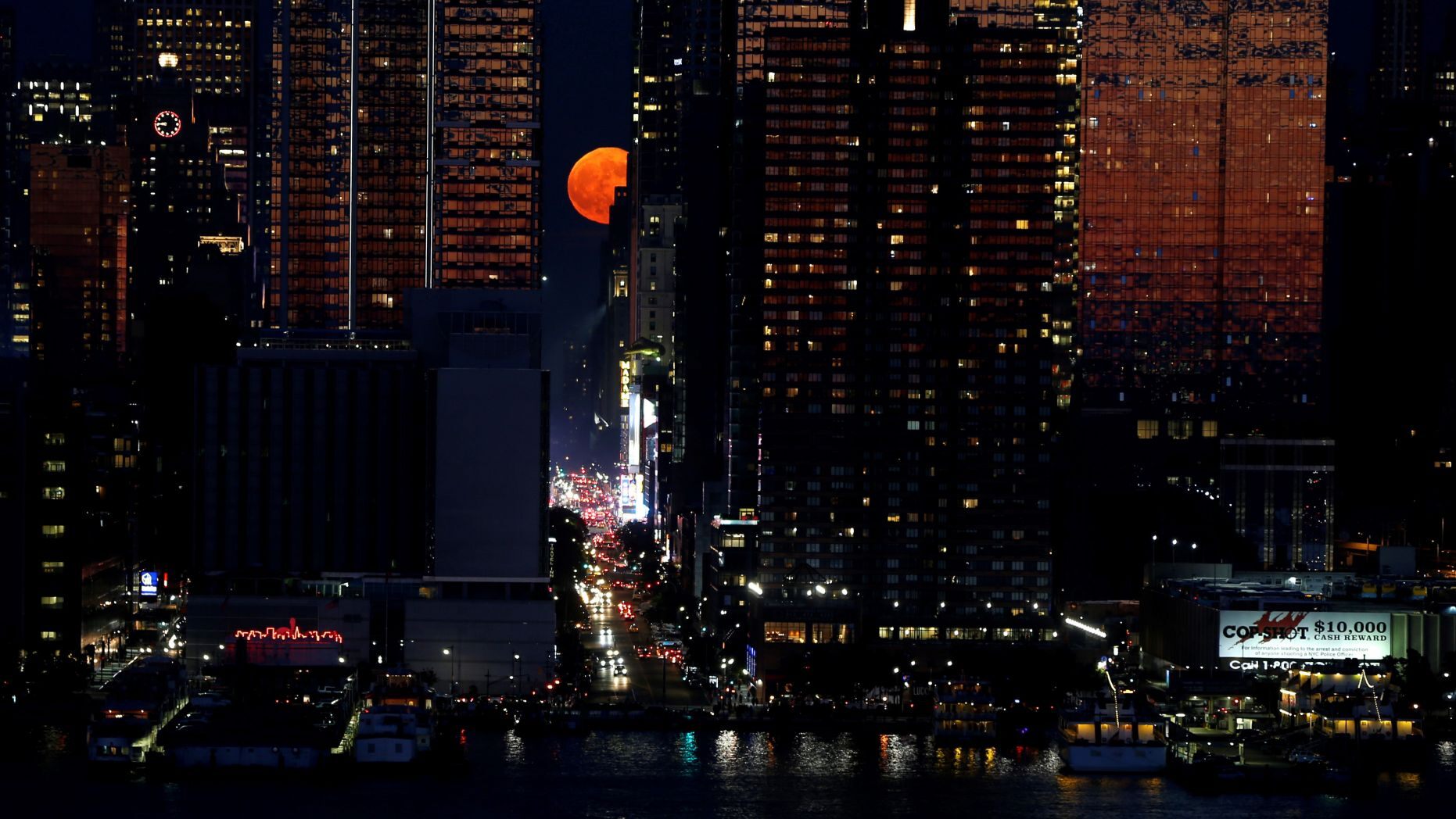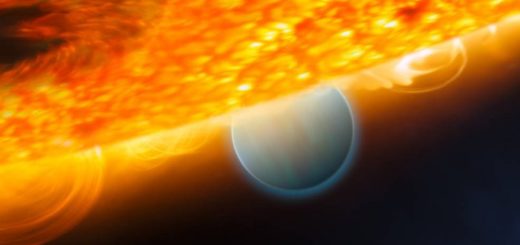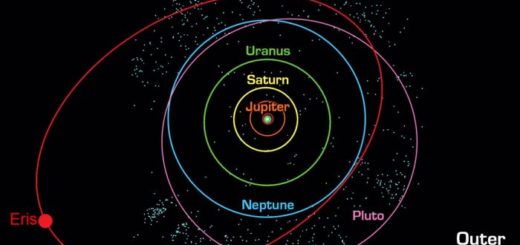Get set for stunning strawberry moon

Citing the Maine Farmer’s Almanac, NASA notes that the June full moon was dubbed the strawberry moon by Algonquin tribes. “The name comes from the relatively short season for harvesting strawberries in the north-eastern United States,” the space agency explains. “An old European name for this full Moon is the Mead Moon or the Honey Moon.”
Mead is an alcoholic drink made from a fermented mixture of honey and water. “Some writings suggest that the time around the end of June was when honey was ripe and ready to be harvested from hives or from the wild, which made this the ‘sweetest’ Moon,” explains NASA.
SUPER PINK MOON THRILLS SKYWATCHERS
The Old Farmer’s Almanac notes that the name strawberry moon was used by every Algonquin tribe. The celestial event was also known as the rose moon in Europe, it adds.
The Strawberry Moon rises over lower Manhattan and One World Trade Center on June 06, 2017 in Montclair, New Jersey – file photo.
The Strawberry Moon rises over lower Manhattan and One World Trade Center on June 06, 2017 in Montclair, New Jersey – file photo. (Photo by Kena Betancur/VIEWpress/Corbis via Getty Images)
The June full moon may also be linked to the phrase “honeymoon,” according to the Old Farmer’s Almanac.
“In the past, June has been the most popular month for weddings, leading some to suggest that the Moon’s honey-colored appearance in June was the origin of the ‘honeymoon’ phrase,” it explains on its website. “Nowadays, however, the most popular wedding months are August, September, and October, plus a little research shows that the Moon’s color never did have anything to do with that expression.”
The strawberry moon, however, will not be a supermoon. The May full moon, known as the flower moon, was the last supermoon of 2020.
SNOW MOON STUNS AS ONE OF THE LARGEST FULL MOONS OF 2020 LIGHTS UP THE SKY
In April, skywatchers enjoyed the super pink moon, which was the largest supermoon of the year.
NASA notes that a partial eclipse is also on deck. although this will not be visible for most people in the Americas. “The Moon will be close enough to opposite the Sun that it will pass through part of the partial shadow of the Earth, called a partial penumbral eclipse of the Moon,” it explains on its website. “During this eclipse, the Moon will not be in the sky for most of the Americas. If we could see the Moon, the slight dimming during this eclipse will not be noticeable without instrumentation.”



 Creators of mankind
Creators of mankind Description of “Tall white aliens”
Description of “Tall white aliens” Where they came from?
Where they came from? About hostile civilizations
About hostile civilizations The war for the Earth
The war for the Earth “Tall white aliens” about eternal life
“Tall white aliens” about eternal life Video: “Nordic aliens”
Video: “Nordic aliens” Aliens
Aliens Alien encounters
Alien encounters The aliens base
The aliens base UFO
UFO Technology UFO
Technology UFO Underground civilization
Underground civilization Ancient alien artifacts
Ancient alien artifacts Military and UFO
Military and UFO Mysteries and hypotheses
Mysteries and hypotheses Scientific facts
Scientific facts


















